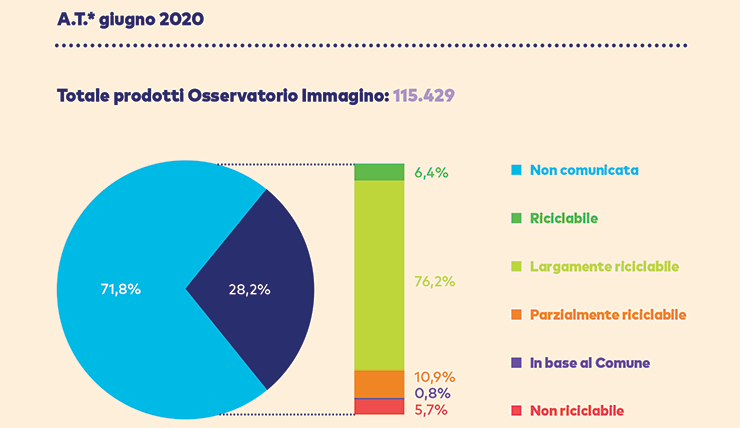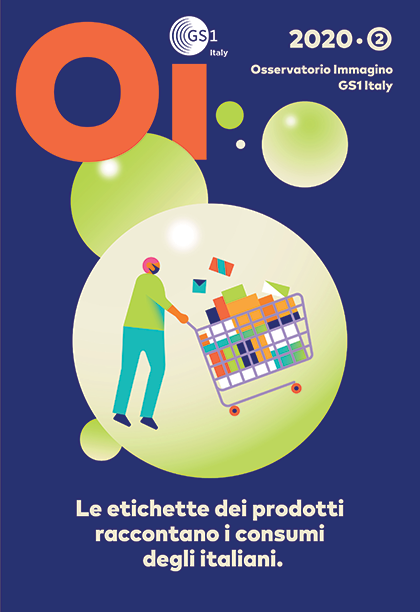Green claim on the label
The commitment to adopt sustainable packaging declared on product labels convinces Italian consumers, leading to an increase in sales. This is confirmed by the data collected by the eighth edition of the Immagino Observatory of GS1 Italy, of which we report an extract.
The survey carried out by the Immagino Observatory highlighted how, among the various types of messages that recur in packaging communication, the claims relating to the reduction of environmental impact on the labels of more than 24,000 products have influenced the purchase choices of consumers.
In particular, the aspects associated with packaging sustainability have a fundamental place in the communication of brands, with a twofold purpose: on the one hand, to signal the commitment of companies to rethink the packaging of products in an eco-compatible way, and on the other, to help consumers to correctly dispose of it under segregated waste collection after use.
By examining in detail the different types of claims relating to the sustainability of packaging, significant trends can be highlighted.

Compostable packaging. Products that make this claim show the most substantial growth in sales with a 54.4% increase in sell-out, and appear to be increasingly widespread in many categories of the food sector, such as ice cream in tubs, disposable table accessories, ground coffee and cheese.
Packaging with “less plastic”. A double-digit increase (+29.5%) in the sell-out of products bearing this message, which is especially widespread among washing machine detergents and personal care products.
Packaging made “with recycled material”. There has been a strong increase in the offer (+29.9%) of products whose claim states the intention to save resources and which have seen a 6.9% increase in turnover, particularly with regard to shampoos, laundry and washing machine detergents, dishwasher detergents and garbage bags.
Recyclable packaging... and where to dispose of it. Analysing sales figures (pondered according to the composition of the “average” supermarket trolley), the Immagino Observatory found that 47.3% of the more than 21 billion units sold can be attributed to 28.2% of products that communicate recyclability of packaging on the label: in June 2020, products with this indication saw a 2.8% increase in units sold. At the same time, for the second year in a row, the sell-out of products that do not communicate this indication fell (-1.0%).

However, although the sell-out of these products increased by almost 3% in absolute terms, their incidence remains relatively low: in fact, considering the 115,429 FMCG products surveyed in this edition of the Immagino Observatory, only 28.2% of them (about 32,500) indicated on the label the recyclability of the packaging, by means of pictograms or symbols such as the voluntary labeling system proposed by Conai, the chasing arrows (the triangle with the arrows chasing each other, accompanied by a number and a specific acronym for each material) or the green dot.
In contrast, therefore, 71.8% of products on the shelf do not specify how to dispose of the packaging. This does not mean that the packaging is not actually recyclable - on the contrary, 6.4% of the same are fully recyclable, 76.2% for the most part - only that the information has not been made explicit on the label.




















